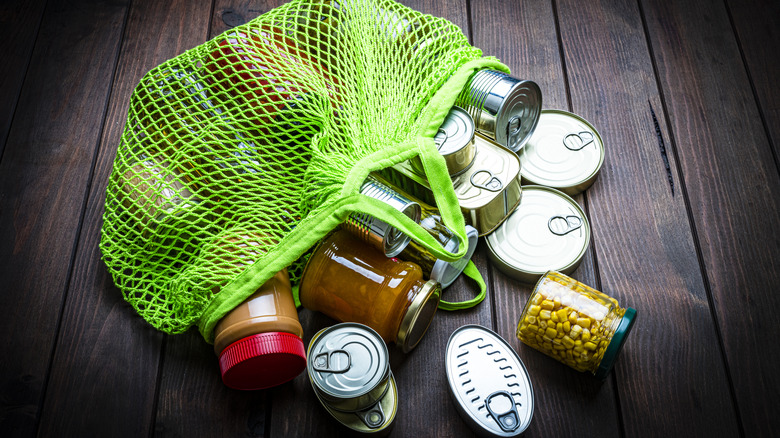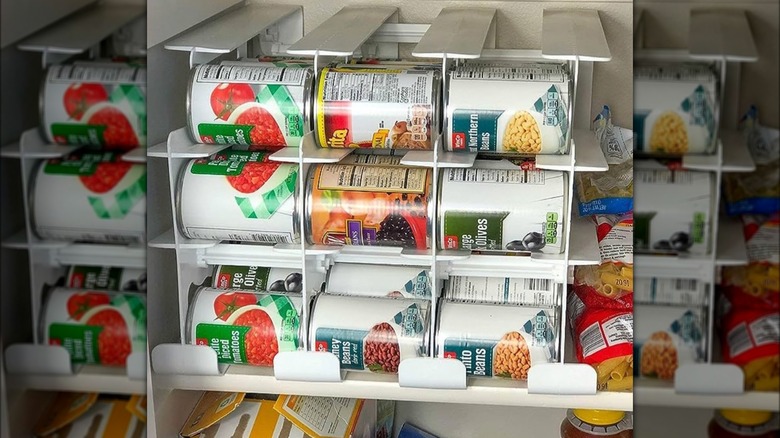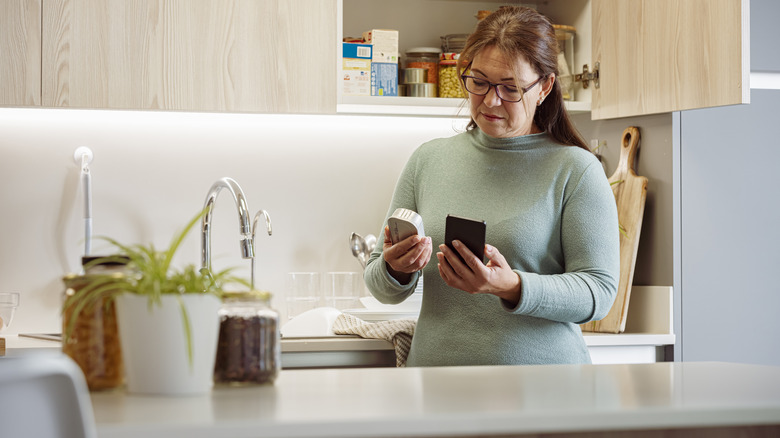The Kitchen Tip For Easy Access To Canned Food While Cooking
Canned food is convenient when it comes to preparation, but storage is another beast altogether. Keeping cans in a pantry can pose some challenges, as the items you need for tonight's dinner might be located all the way on the other side of the kitchen or in the way back of the cabinet. Fortunately, there's an effective hack you can use. Instead of the pantry, place cans in a deep drawer located in proximity to your oven or stove. You can lay them down so their labels are visible or arrange them in storage racks. Now everything you need will be right in reach and you won't have to go searching around for a particular item.
For even greater convenience, if you have to store your cans upright, write the contents of each can on the top in permanent marker. This allows you to make an instantaneous selection without removing the can to determine what it is. If you're feeling particularly crafty, you can even apply some reusable write-on labels, which can be used again and again. These labels are especially beneficial if you find yourself purchasing the same types of canned goods during subsequent shopping excursions.
How to store canned goods when you lack kitchen space
Unfortunately, not all home chefs are blessed with ample kitchen storage, which can make finding a home for all your canned items challenging. If the handy kitchen drawer hack isn't available to you, consider investing in a kitchen cart. Kitchen carts are ideal when storage is limited in the home, as they provide additional shelving to place canned foods and other essential pantry items. Rolling kitchen carts also greatly enhance convenience, as they can be moved around the room as needed when you're preparing meals.
There are different types of kitchen carts, and the best option depends on your specific needs. Some carts are more robust to accommodate heavy items, such as extra-large canned goods. Others feature a prep table on top, which provides another work surface for meal prep. Some rolling carts are even designed to act as an additional pantry, which is ideal for home chefs seeking to improve both storage and convenience in the kitchen. Along with utility, many carts are designed to be attractive additions to the kitchen, which means they won't negatively impact your current decor.
Other tips on storing canned foods at home
While canned items typically have long shelf lives, proper storage is key to maintaining quality and safety. In this case, you must choose the right environment for canned items, whether they're in a drawer or on a cart. Temperature is a key concern, as canned foods will fare best in an area of the kitchen that ranges from 50 to 70 degrees Fahrenheit. While cooler temperatures are ideal, never place cans in the freezer, as freezing can cause expansion of internal liquids, which can then compromise the exterior of the can.
By the same token, the area where you store canned foods must be well protected from moisture. A moist environment can lead to rust, which can cause holes and defects to develop in the can. If the contents are exposed to the open air, spoilage will occur at a much faster rate, no matter what the expiration date says. Proper storage ensures convenience and safety, but it also keeps your grocery budget in check by reducing the chance of food waste.


